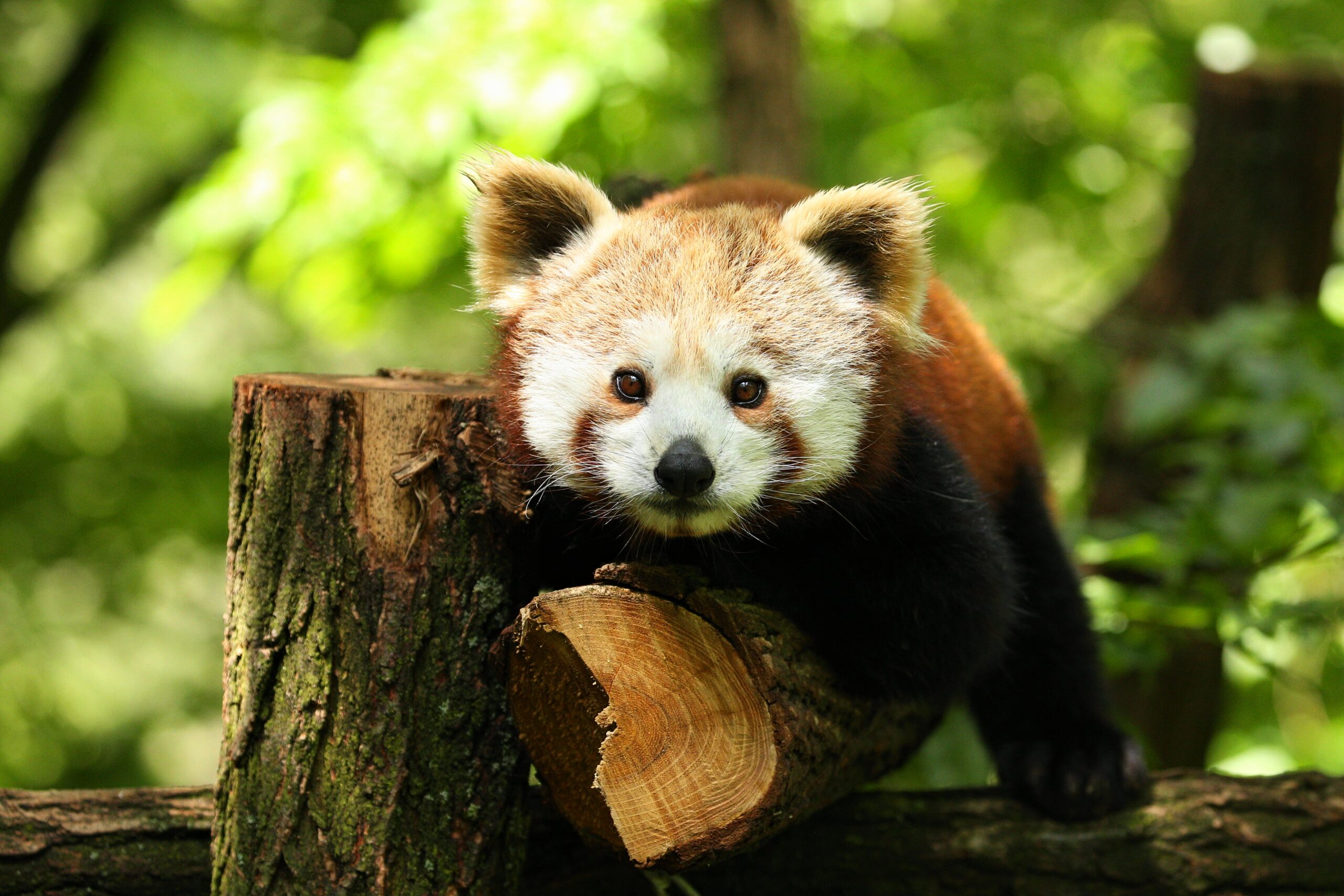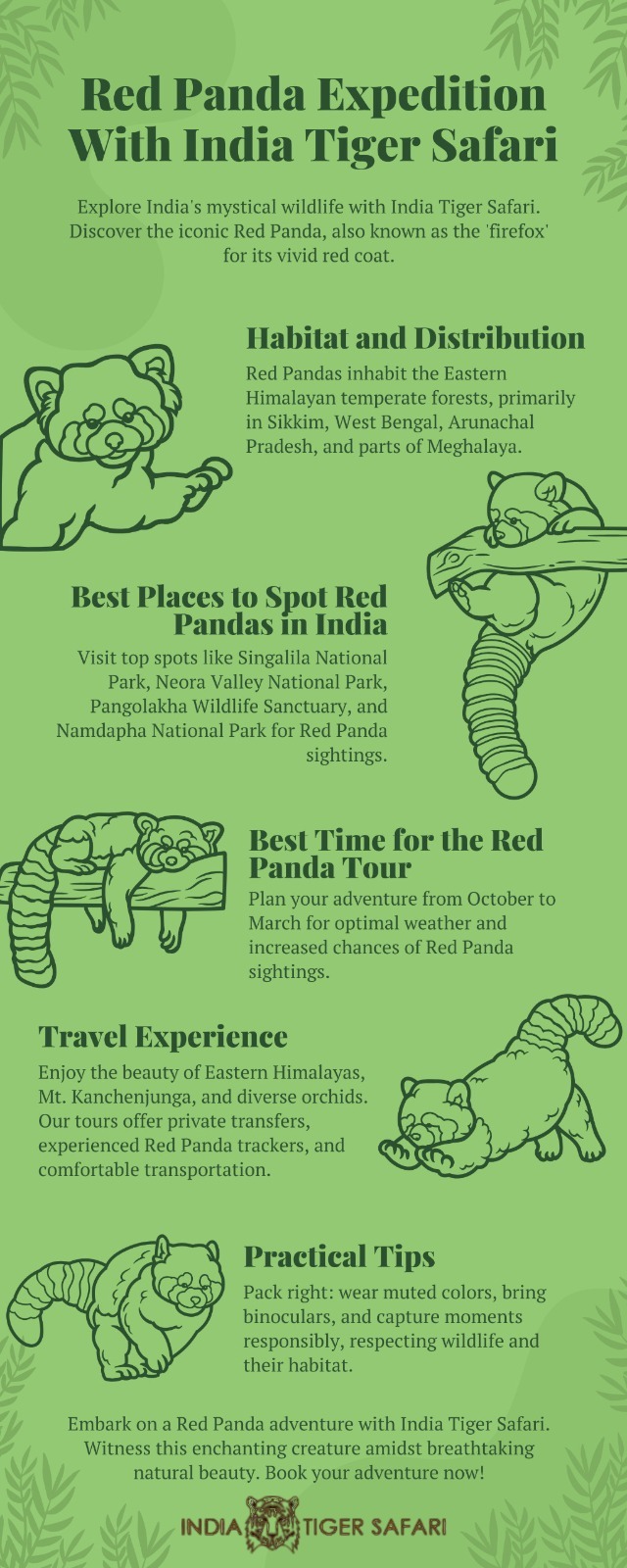
India’s rich tapestry of cultures, terrain, and wildlife draws adventurers and nature enthusiasts from all over the world. Among the many treasures to be found in India is the Red Panda, also known as the “firefox” for its striking red coat. This elusive creature resides in the unspoiled habitats of Northeastern India. Embarking on a Red Panda tour in India not only unveils the mysteries of this extraordinary mammal but also deepens one’s appreciation for the natural wonders of India’s pristine wilderness.
Habitat and Distribution
The Red Panda, also scientifically known as “Ailurus fulgens,” predominantly inhabits the temperate forests of the Eastern Himalayas. In India, its range extends through Sikkim, West Bengal, Arunachal Pradesh, and parts of Meghalaya. The natural habitat is denoted by thick bamboo forests, which constitute the primary diet of the Red Panda.
Best Places to Spot Red Pandas in India
Singalila National Park, West Bengal:
Nestled along the Singalila Ridge at an elevation ranging from 7,900 feet to 12,000 feet, this park is one of the most popular spots for Red Panda sightings. The trek through the park also offers panoramic views of the Kanchenjunga and Everest Mountain ranges.
Neora Valley National Park, West Bengal:
Another gem in the state, Neora Valley, is known for its rich biodiversity. The dense bamboo forests and higher-altitude meadows make it a suitable home for the Red Panda.
Pangolakha Wildlife Sanctuary, Sikkim:
Sharing its boundary with West Bengal’s Singalila National Park, this sanctuary is yet another prime spot for catching a glimpse of the Red Panda.
Namdapha National Park, Arunachal Pradesh:
As India’s third-largest national park, Namdapha offers diverse habitats. One might encounter a Red Panda with some luck amidst its dense foliage.
Best Time for the Red Panda Tour
The ideal time for a Red Panda tour in India is from October to March. During this period, the weather is clear, making it easier to spot these creatures. The cool temperatures also mean the Red Pandas are more active, often venturing out for food.
A Travel Experience With India Tiger Safari
The trip is ready to be customized to fit your interests, budget, and travel style, enabling you to connect with local cultures and experience authentic travel on your terms and schedule.

At a Glance
DESTINATIONS: Delhi, Bagdogra, Manebhanjan, Kaikata, Manebhanjan, Bagdogra, Delhi
TOUR HIGHLIGHTS:
- Explore the Eastern Himalayan Forest of Singalila.
- Spectacular views of Mt. Kanchenjunga, the third-highest mountain in the world.
- Over 600 varieties of orchids, the largest concentration in the world.
- Learn and explore forests and their importance for the dispersal of red pandas.
- Services of experienced Red Panda trackers.
- Rich bird species.
- Transportation in Toyota Innova and Vintage Land rovers.
- Private Transfers
- Enjoy the in-house Bird Studio – watch or document elusive Himalayan wildlife.
- Stay in the eco-friendly Lodge – Habre’s Nest at Kaiakata.
Special note for Wilderness – Please refrain from wearing bright colors while out in the field. This includes clothing, hats, gloves, and any other travel gear. To increase our chances of approaching birds and wildlife, it is essential to wear muted colors. It is also recommended to bring a pair of binoculars and, for avid bird watchers, a spotting scope. Don’t forget to bring all necessary camera equipment, including spare batteries, memory cards, and a storage drive. If you plan to charge your camera, be sure to bring a travel adapter as Indian power plug sockets (Type D) are round two pins and 220V. To protect your camera equipment from dust and sand, consider bringing plastic bags, cotton bags, or pillowcases. Lastly, a small daypack/camera bag will come in handy for carrying extra clothing, camera equipment, and a water bottle.
Conservation Efforts
While the India Tiger Safari Red Panda tour offers a unique opportunity for enthusiasts and wildlife photographers, it’s essential to understand that the species is currently listed as “Endangered” on the IUCN Red List. Rapid deforestation, poaching, and habitat loss have led to a decline in their numbers.
India has made significant efforts to protect this species through various conservation programs, protected areas, and awareness campaigns. As tourists, it’s crucial to be responsible and ensure minimal disturbance to their natural habitat.

Conclusion
Embarking on red panda tour in India to explore the Red Panda habitat in India is an exceptional opportunity to immerse oneself in the diverse wildlife of the Eastern Himalayas. The trek through dense forests, rocky terrains, and cool mountain areas offers an unforgettable adventure and a great view of Mt.Kangchenjunga. It is the third-highest mountain in the world. Its summit lies at 8,586 m. It’s important to bear in mind that wildlife sightings require patience. Observing a Red Panda in its natural habitat, even if it is only for a fleeting moment, leaves an indelible impression on any nature lover.